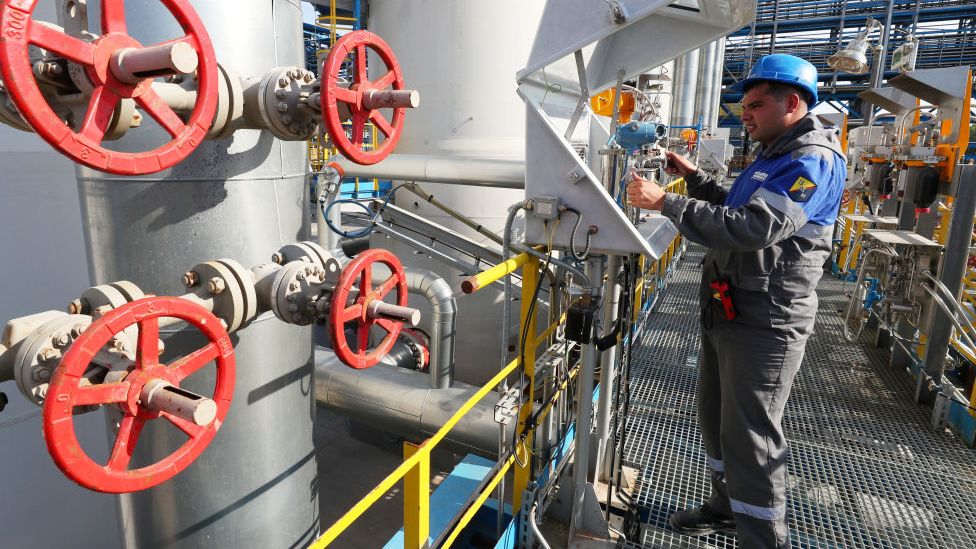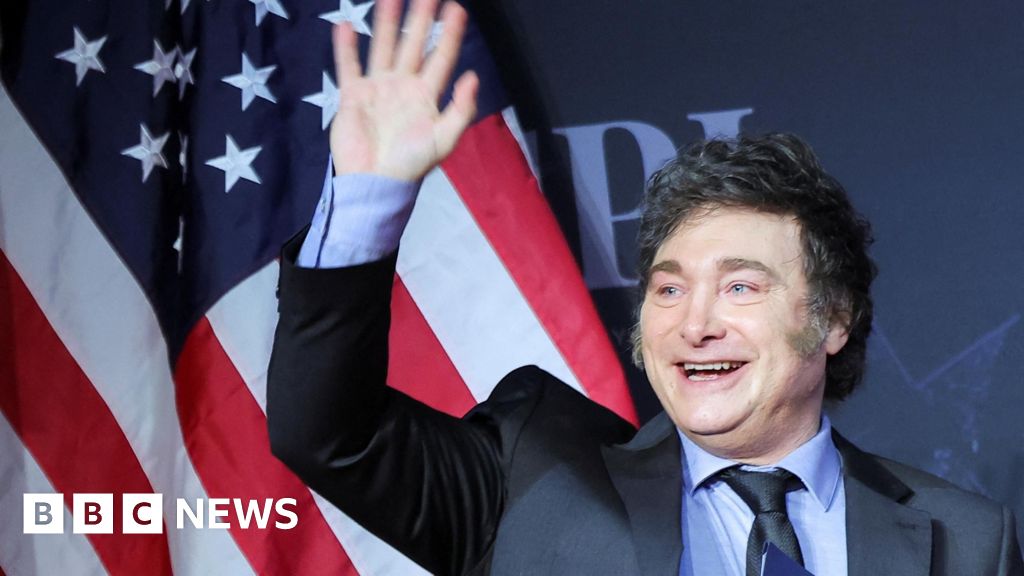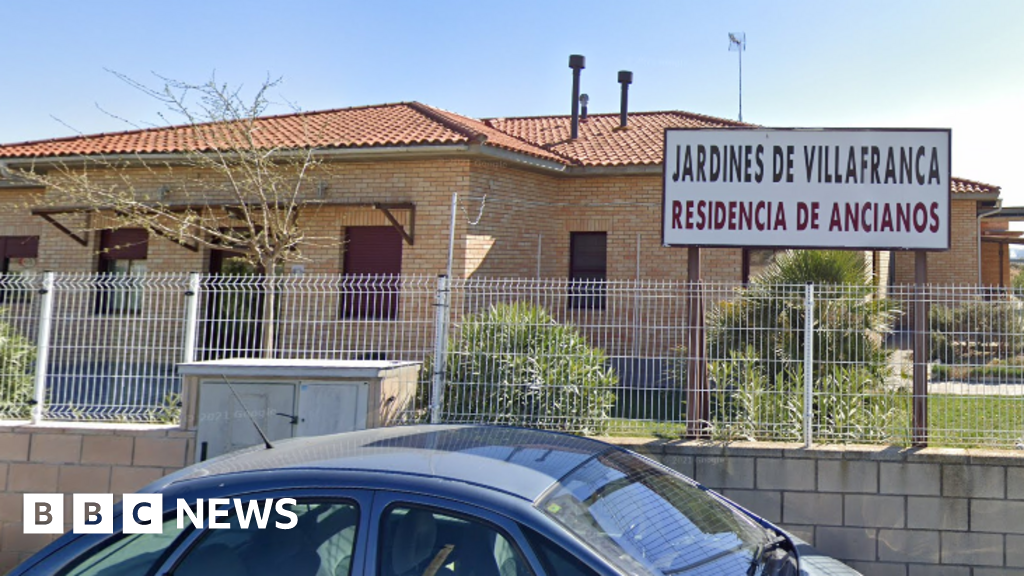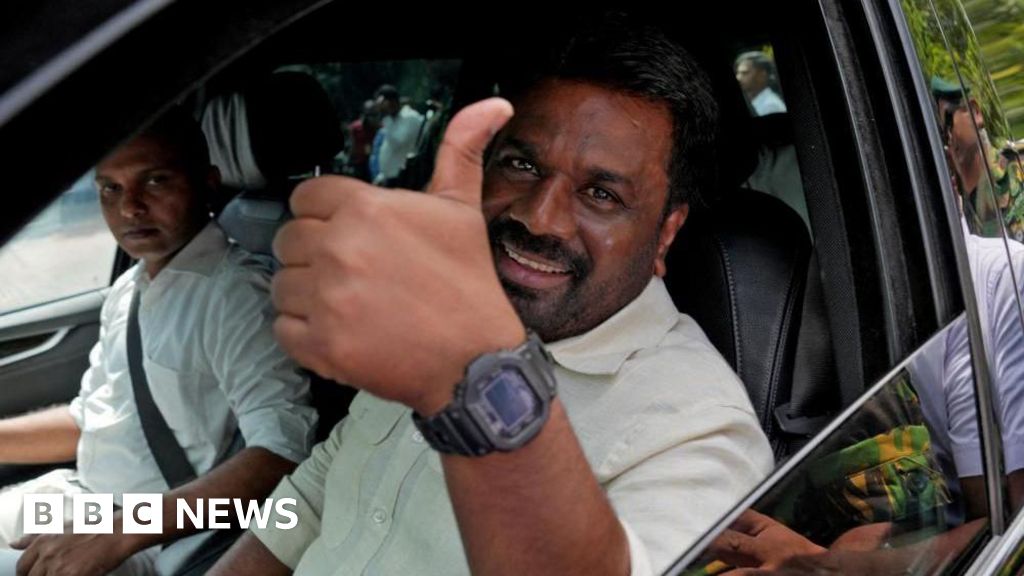ARTICLE AD BOX
 Image source, Getty Images
Image source, Getty Images
Last September strong underwater explosions in the Baltic Sea ripped gaping holes in the Nord Stream gas pipelines between Denmark and Sweden
By Frank Gardner
BBC security correspondent
Mysterious underwater explosions, anonymous cyber attacks and subtle online campaigns to undermine Western democracies - these are all "hybrid threats". The BBC visited a centre dedicated to targeting a relatively new form of warfare which is increasingly concerning Nato and the EU.
"It is about manipulation of the information space. It's about attacks on critical infrastructure," explains Teija Tillikainen, when asked to define hybrid warfare.
She is director of the European Centre of Excellence for Countering Hybrid Threats (Hybrid CoE), which was established in Helsinki, Finland, six years ago.
Ms Tillikainen says it is an ambiguous threat format, which is something nations find very difficult to counter and protect themselves against.
But these threats are very real.
Last September, powerful underwater explosions beneath the Baltic Sea ripped gaping holes in the Nord Stream gas pipelines between the coasts of Denmark and Sweden. The pipelines were constructed to carry Russian gas to northern Germany.
Moscow was quick to deny any responsibility, but Western suspicions centred around a potential Russian motive to further starve the West of energy, as punishment for backing Ukraine after Russia's invasion last February.
Then there is electoral interference. Few people realised at the time, but after the 2016 US elections, investigators concluded there had been concerted Russian interference - again, denied by Moscow - with the aim of damaging Hillary Clinton's chances, in favour of Donald Trump.
This was allegedly conducted using online "bots" - artificial online accounts on social media controlled by state-backed cyber activists, working out of "troll factories" in St Petersburg.
Another method is disinformation - the deliberate propagating of an alternative, false narrative, often one that appeals to certain more receptive sections of a population. This phenomenon has accelerated since Russia's invasion of Ukraine, with millions of citizens - not just in Russia but even in Western countries - accepting the Kremlin's line that the invasion was a necessary act of self-defence.
HybridCoE
The Russian narrative is the Arctic is outside of conflicts [but it's] building up its military there.
To help Western governments identify and protect themselves against these threats, Nato and the EU set up the Hybrid CoE in Finland. The country is an interesting and perhaps natural choice for such a centre. For decades, it has stayed officially neutral, ever since it lost a short winter war with Russia in 1940.
But the two countries share a border which is 1,300km (807 miles) long, and a nervous Finland has been drawing ever closer to the West, culminating in its application to join Nato last year.
On a cold, snowy morning, I visited the centre, housed in an office block close to the defence ministry and just a short distance from the grey, Soviet-era Russian embassy building.
There, director Teija Tillikainen leads a team of around 40 analysts and subject-matter experts drawn from a number of Nato and EU countries, including a Briton on loan from the Ministry of Defence.
She explains that a current area of focus is in the Arctic, where they have mapped a lot of hybrid threat potential.
"There are new energy sources emerging," she explains. "There are new possibilities for great powers to protect their interests. There's also a lot of manipulation of information.
"The Russian narrative is the Arctic is a special region outside of conflicts where nothing bad is happening - and still Russia is building up its military there."
Hybrid threats include underwater sabotage, an increasing concern here in the Baltic Sea
Perhaps the key distinguishing features of hybrid threats are that they almost never involve an actual "kinetic" attack - someone opening fire with a weapon. They are much more subtle, but often no less dangerous. They are also non-attributable in nature, meaning it is usually hard to determine who was behind these acts, such as the 2007 massive cyber attack on Estonia, or last year's gas pipeline explosions under the Baltic. The perpetrators take care to leave as few clues as possible.
There are numerous ways one state can damage another short of direct military action.
This is illustrated by a handbook drawn up by the centre, outlining maritime hybrid threats - containing 10 imaginary but highly-plausible scenarios. They range from the clandestine use of underwater weapons to declaring a control zone around an island, plus the blocking of narrow straits.
One real scenario they have examined in detail was Russia's actions in the Sea of Azov prior to its invasion of Ukraine. From October 2018 onwards, in order for Ukrainian ships to progress from their home ports of Mariupol and Berdyansk through the Kerch Strait and out into the Black Sea, they first had to queue for inspection by Russian officials. These delays, says Jukka Savolainen, the director of vulnerabilities and resilience, could stretch into days or even up to two weeks, inflicting economic damage on Ukraine.
But it is in the field of disinformation that the centre's experts have found the most surprising results. After collating and assessing numerous opinion polls across Europe, they have come to the conclusion that in several Nato countries, Russia is winning the information war amongst substantial portions of the population.
In Germany, for example, the Kremlin's narrative that its attack on Ukraine was a necessary reaction to Nato provocation has been gaining popularity as the war continues. In Slovakia, more than 30% of those polled believed the Ukraine war was deliberately provoked by the West. In Hungary, 18% blamed "the oppression of the Russian-speaking population in Ukraine" for the war.
Jakub Kalensky, a senior analyst from the Czech Republic, uses the analogy of water to illustrate the need to suppress Moscow's disinformation campaign.
"I wouldn't evaluate Russian disinformation as particularly sophisticated," he explains. "It's not about the attractiveness of the message, but the way they achieve success is through sheer numbers. There's no reason to give these people access to social media platforms. Everyone wants to have access to fresh water, but we don't allow them to poison the water."
Ms Tillikainen says it is not the centre's role to undertake measures to counter hybrid threats - but to assess, inform and then train others to do what needs to be done to protect Europe from this growing phenomenon.
Listen to Frank's visit to Hybrid CoE on our podcast 5 Minute On

 1 year ago
26
1 year ago
26








 English (US)
English (US)